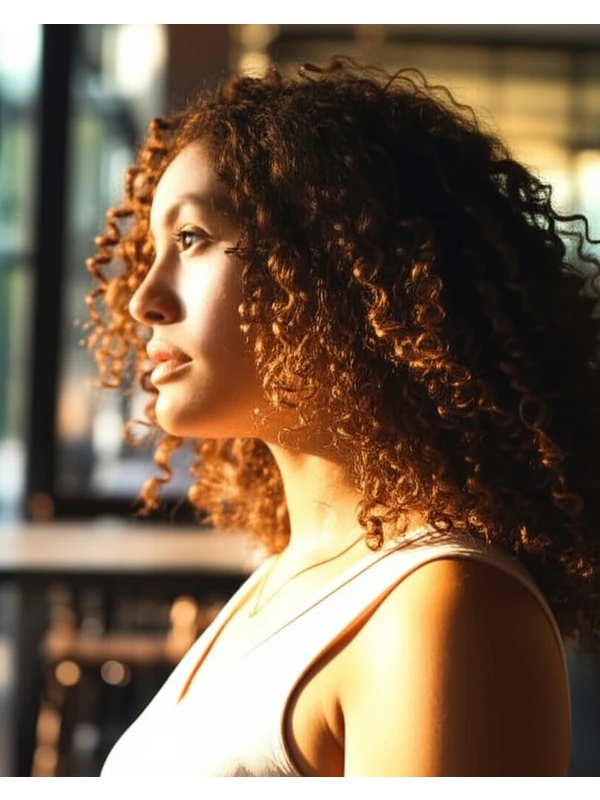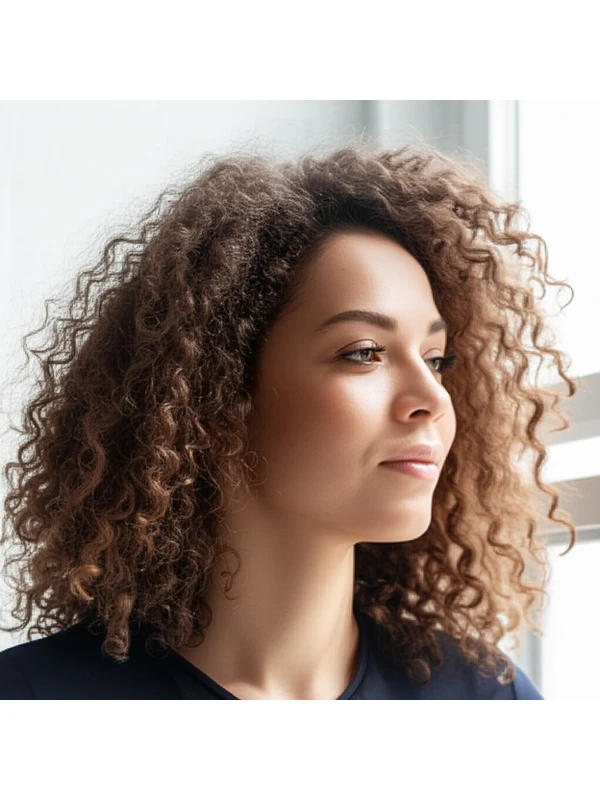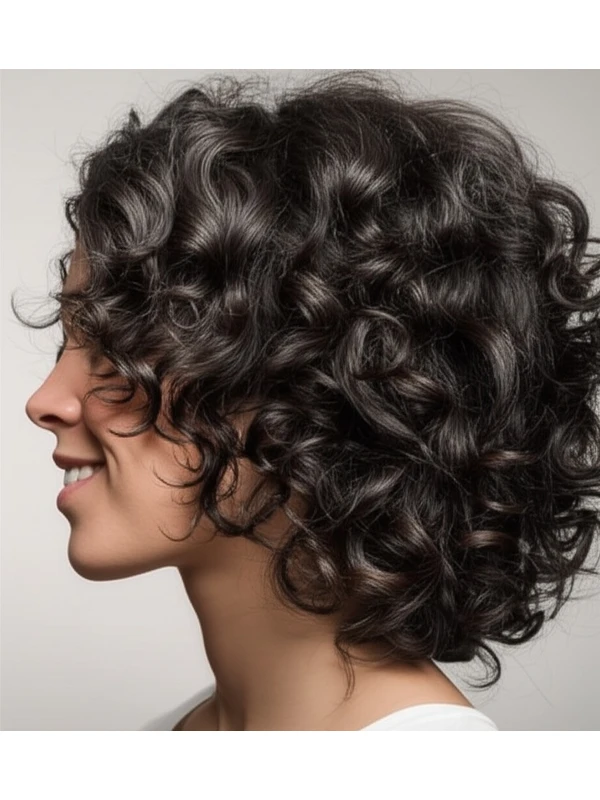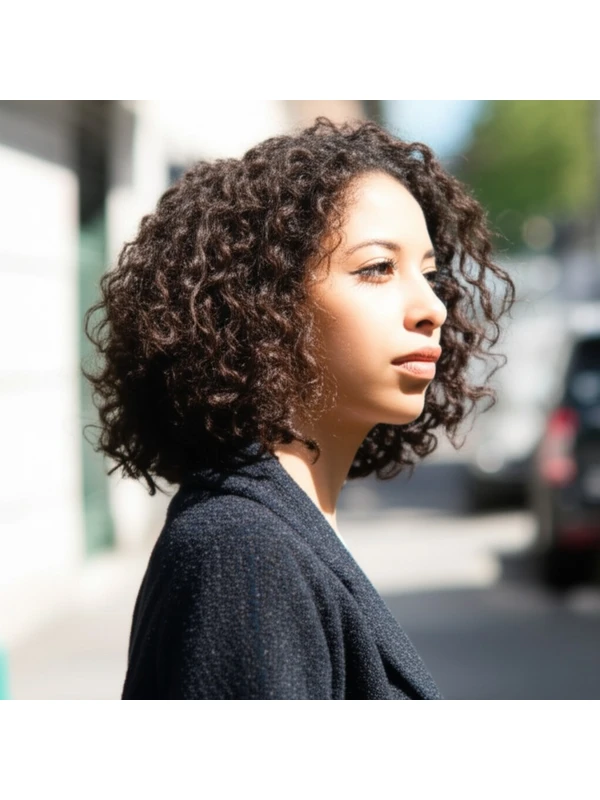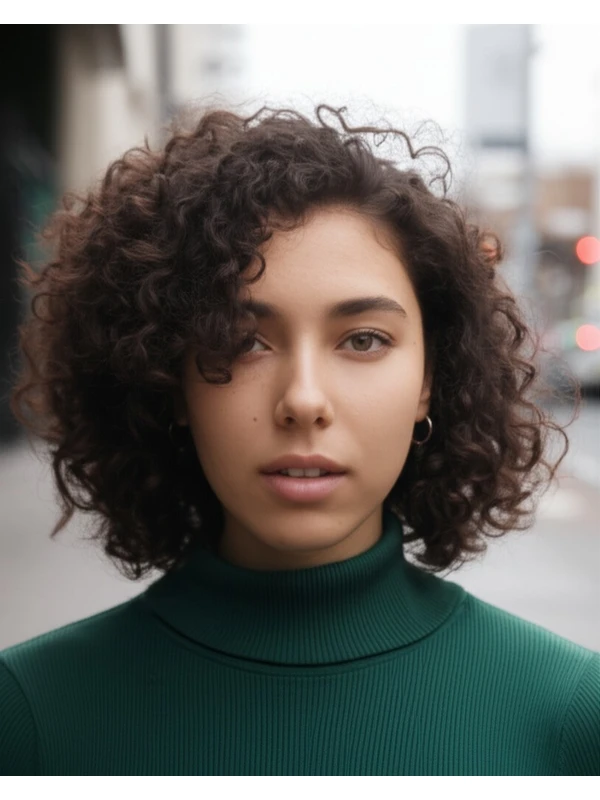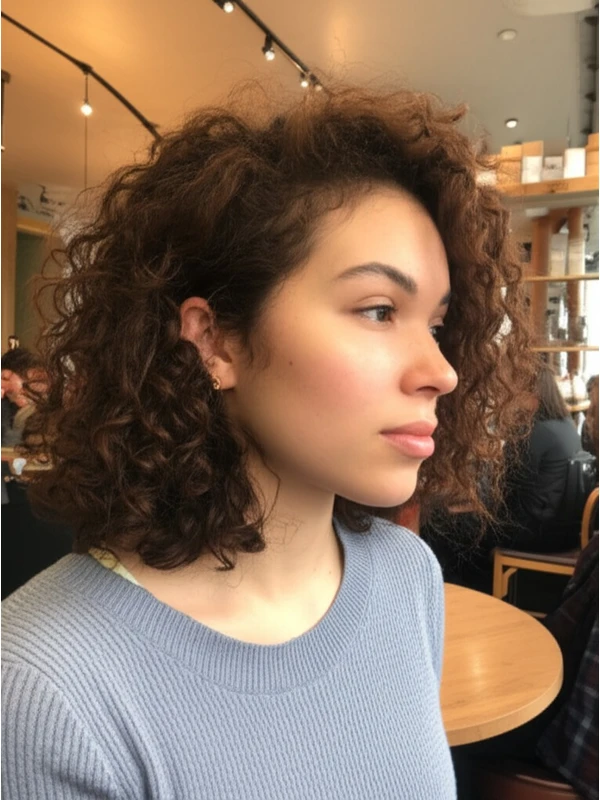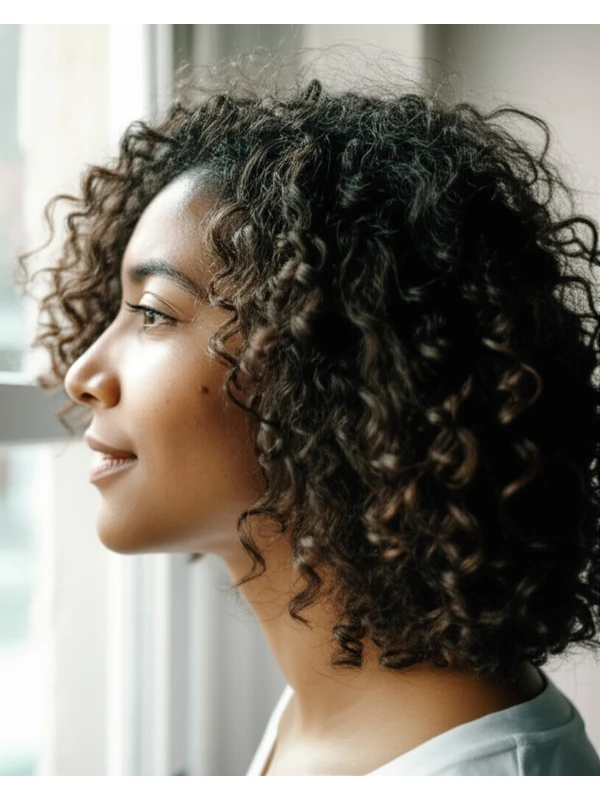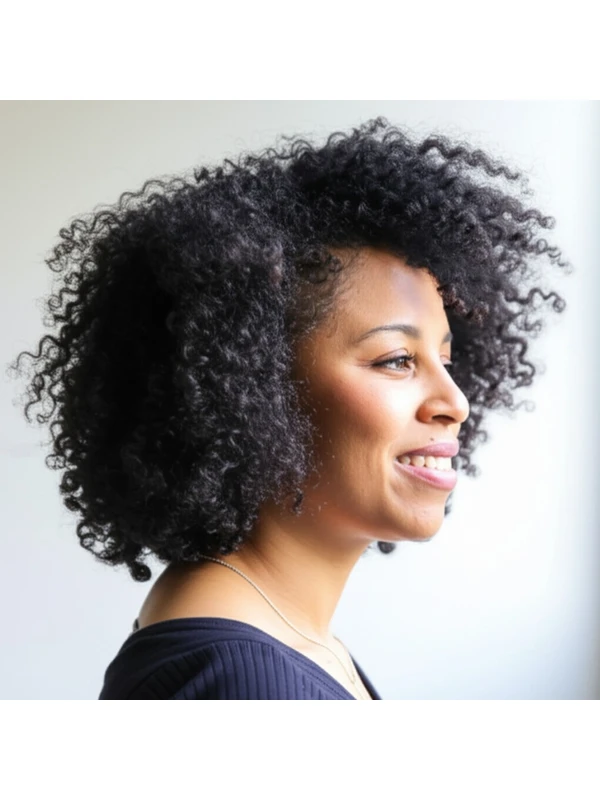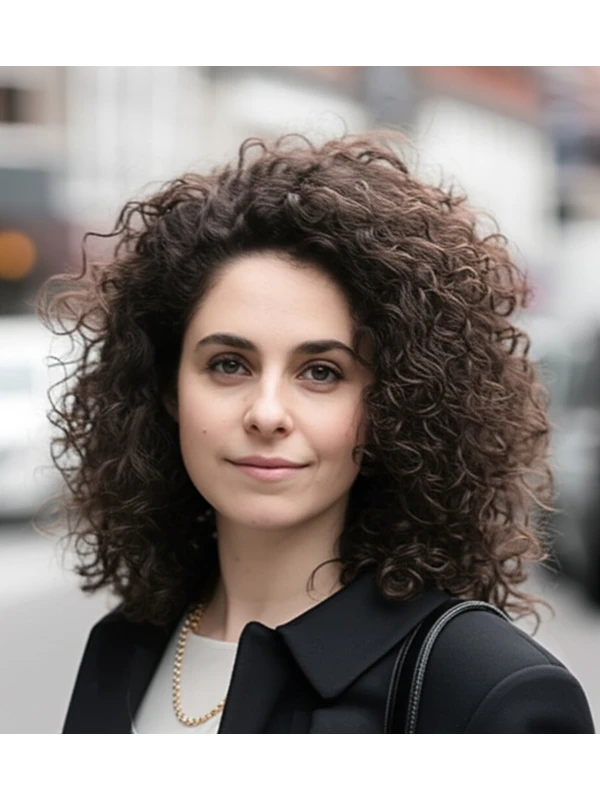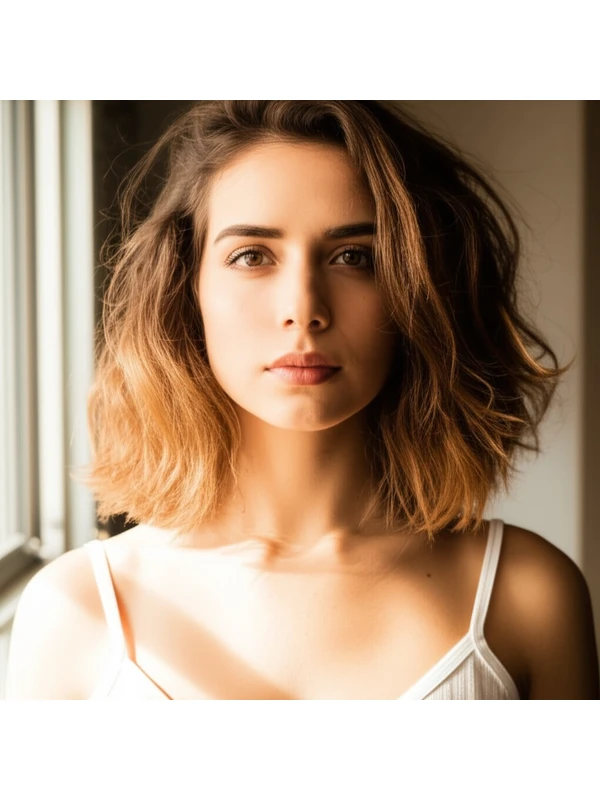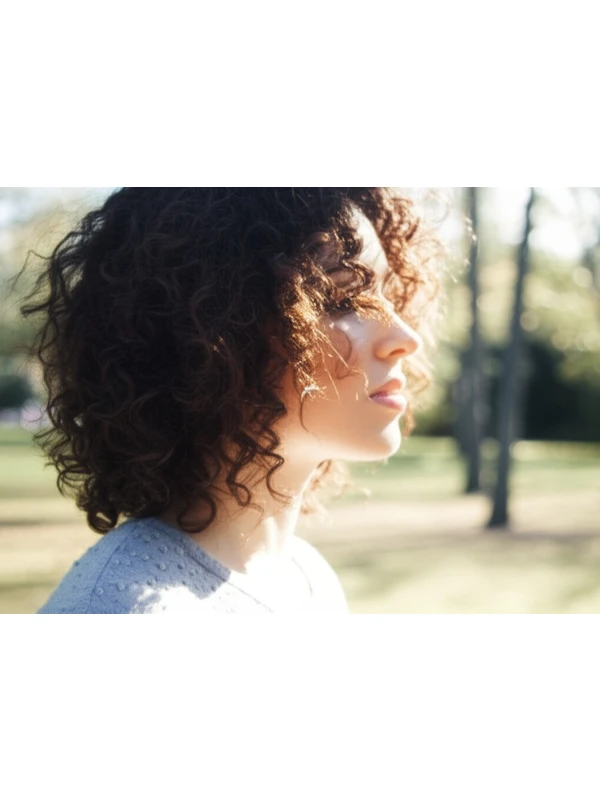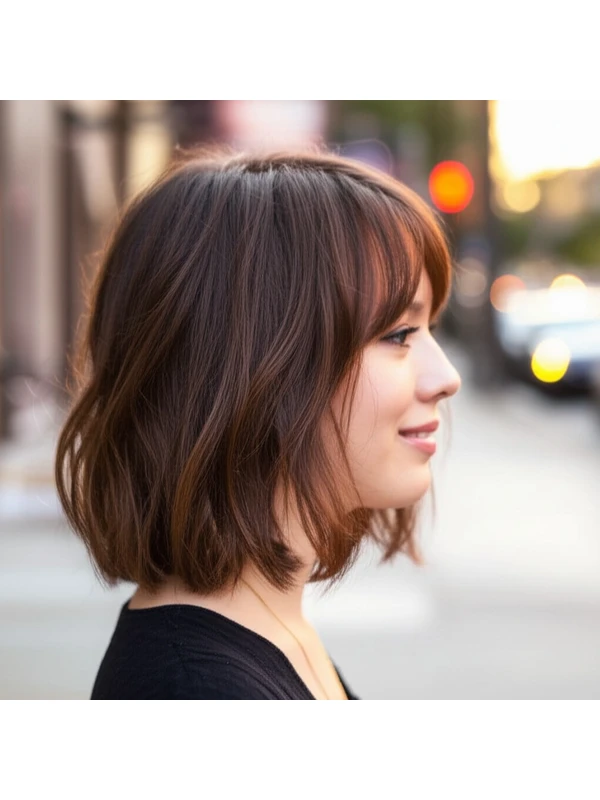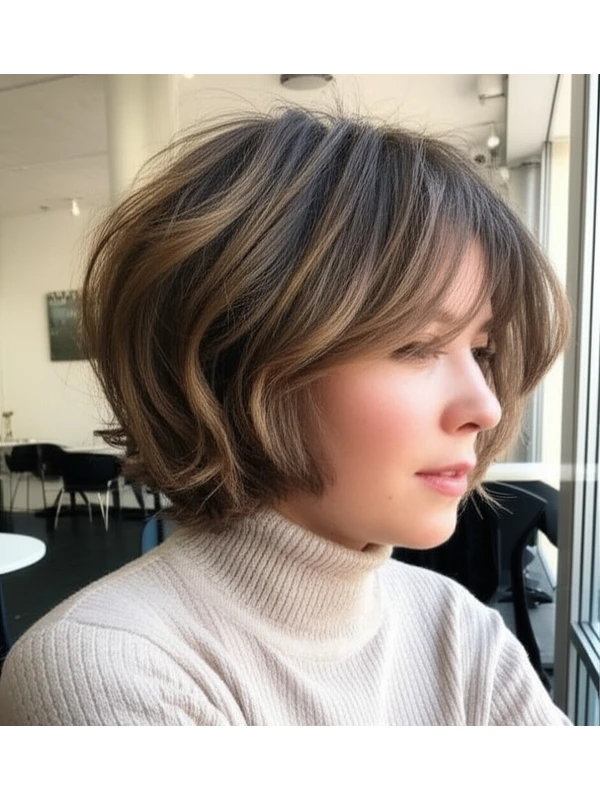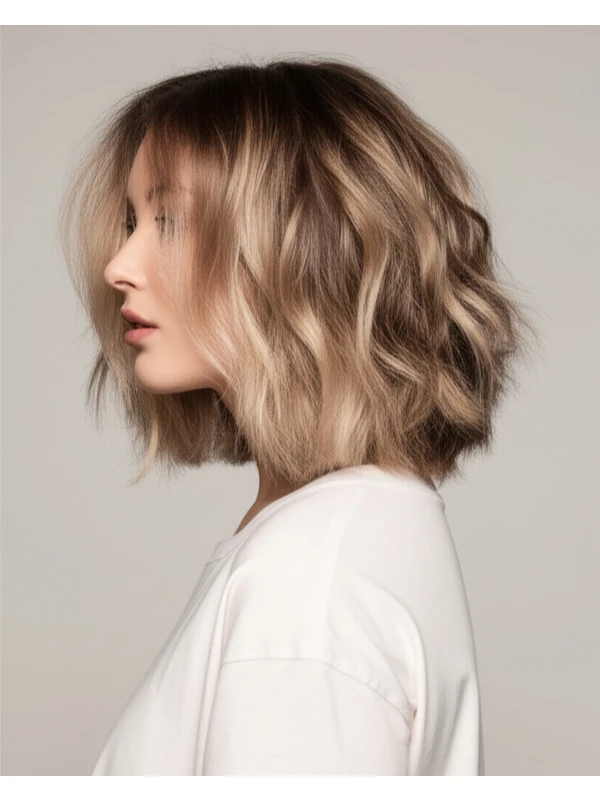#Coily Layers: A Guide to Volume, Shape & Style
Coily layers are a fantastic way to add dimension, movement, and personality to your hair! This cut isn’t just about chopping off length; it's about sculpting shape and celebrating the natural beauty of coily textures. Let's dive into everything you need to know.
#1) Background & Definition: What Are Coily Layers?
Coily layers involve strategically cutting sections of your hair at varying lengths, creating a tiered effect that showcases volume and definition. Unlike layered cuts on straighter hair types where the layers are often more visible as distinct segments, with coily hair, the layers blend together to create an overall shape rather than sharply defined pieces. Think of it as sculpting volume rather than simply shortening length.
Key Features:
- Graduated Lengths: Layers aren't all one length; they progressively shorten towards the face or crown.
- Volume at the Crown: Often, layers are cut to lift and add volume around the top of the head.
- Defined Curls/Coils: The layering technique enhances curl definition by removing weight and allowing individual curls/coils to spring up.
Typical Length Ranges: Coily layered cuts can range from short (chin-length or shorter) to long (past shoulder length). The longer the hair, the more blended the layers will appear.
Alternative Names: Sometimes referred to as "stacked coif," “layered coil,” or simply “shaped coils.” The key is that it's a cut designed specifically for and with your natural curl pattern.
#2) Face Shape Fit: Finding Your Angle
The beauty of layered cuts is their adaptability, but understanding how they interact with your face shape will help you achieve the most flattering result.
- Oval: Almost any coily layer style works beautifully! The layers enhance symmetry and can be styled to accentuate cheekbones or soften a strong jawline. A side-swept fringe adds balance.
- Round: Layers that are shorter around the face (especially at the sides) will help elongate the face. Avoid very blunt, one-length cuts which can emphasize roundness. A longer, wispy fringe is flattering.
- Square: Soft, blended layers soften a strong jawline and angular features. Avoid sharp, geometric layering that mirrors the square shape of your face. A soft, textured fringe helps to break up harsh angles.
- Heart: Layers around the cheekbones can help balance a wider forehead and pointed chin. Volume at the crown adds fullness where it's needed. Consider a side part for asymmetry.
- Diamond: Layers that add volume around the temples will soften the diamond shape, balancing out the widest points of your face. A fringe (either blunt or wispy) can further soften angles.
- Oblong: Layers with more length at the sides and jawline create width, visually shortening an oblong face. Avoid layers that are too short all over as they’ll exaggerate the length.
#3) Body Proportions & Height Guidance: Tailoring to Your Silhouette
Your overall body shape and height play a role in how your hairstyle looks. Layers can be adjusted to flatter different proportions.
- Petite: Shorter layers (chin-length or slightly longer) create the illusion of more height. Avoid overly long, heavy layers that can overwhelm a smaller frame.
- Average Height: Most layer lengths work well! Focus on placement for desired volume and shape.
- Tall: Longer layers (shoulder length or longer) balance your height. Strategic layering around the face can soften a taller appearance.
- Narrow Shoulders: Layers that add width at the shoulders create a more balanced silhouette.
- Broad Shoulders: Avoid excessive volume directly on top of the head, as it can make shoulders appear even broader. Focus on layers that frame the face and draw attention away from shoulder width.
- Short Neck: Medium to shorter layered cuts are generally most flattering, avoiding styles with too much bulk at the nape of the neck.
#4) Works Best With Hair Types & Densities: Understanding Your Texture
Coily layers shine on a range of hair types and densities, but understanding how your specific texture behaves is crucial.
- Hair Type: This style works best on type 4A, 4B, and 4C coily textures. While it can be adapted for looser coils (3C), the layering effect will be less pronounced.
- Density:
- Fine Hair: Layers create volume but can also make fine hair look even thinner if cut too short or aggressively layered. A medium length is often best.
- Medium Density: Most layer lengths and styles work well with medium density hair.
- Thick Hair: Layers are essential to remove weight, reduce bulk, and encourage curl definition in thick coily hair.
- Shrinkage: Coils can shrink significantly when dry! A stylist needs to factor this into the cut length – what looks like a shoulder-length cut wet will likely be much shorter dry. Communicate your desired dry length clearly with your stylist.
#5) Styling Variations: From Sleek to Textured
Coily layers offer incredible styling versatility.
- Sleek vs. Textured: With product and technique, you can achieve a sleek, defined look or embrace the natural texture for a more voluminous style.
- Middle vs. Side Part: A middle part creates symmetry; a side part adds asymmetry and visual interest.
- Fringe Variations: Wispy bangs soften features; blunt bangs create a bolder statement.
- Occasion Styling:
- Casual: Air-dried with leave-in conditioner for effortless definition.
- Office: Sleeked down with gel or mousse, styled in an updo or half-up style.
- Evening: Defined curls using a curl cream and diffuser; consider adding hair accessories like clips or headbands.
#6) Maintenance: Keeping Your Shape Sharp
Regular maintenance is key to keeping your coily layers looking their best.
- Trim Cadence: Every 6-8 weeks, depending on growth rate and desired shape.
- At-Home Routine: Gentle cleansing with sulfate-free shampoo, deep conditioning weekly, daily leave-in conditioner.
- Heat vs Air Dry: Minimize heat styling to preserve hair health; air drying is preferred whenever possible. If using heat, always use a protectant spray.
- Product Checklist:
- Sulfate-Free Shampoo & Conditioner
- Leave-In Conditioner (essential for moisture)
- Curl Cream or Gel (for definition and hold)
- Oil (to seal in moisture)
- Estimated Daily Styling Time: 15-45 minutes, depending on desired style.
#7) Grow-Out Roadmap: Evolving Your Look
Coily layers evolve as they grow out.
- Months 1-3: The shape is most defined. Regular trims are crucial to maintain the layered effect.
- Months 4-6: Layers begin to blend more, creating a softer look. Adjust styling techniques to prevent hair from looking shapeless. Consider adding face-framing layers if needed.
- Maintaining Shape: Between cuts, focus on moisturizing and defining your curls/coils to keep them healthy and bouncy.
#8) Color Pairings: Enhancing Dimension
Color can elevate coily layered cuts!
- Cool Undertones (ash blonde, cool brown): Enhance the coolness of your skin tone while adding depth to layers.
- Warm Undertones (caramel, honey blonde): Bring out warmth and radiance in your complexion.
- Low-Commitment Options: Highlights or balayage can add dimension without a drastic color change.
#9) Season & Occasion Guide: Adapting Your Style
- Spring/Summer: Lighter styling products, air-dried styles to combat humidity.
- Fall/Winter: Heavier creams and oils for moisture; embrace more defined curl patterns.
- Work: Sleeked down or pulled back in a low bun or ponytail.
- Weddings/Parties: Defined curls with added shine, consider decorative hair accessories.
#10) Cost & Time: What to Expect
- Salon Time: 1.5 - 3 hours (can vary depending on stylist and desired complexity).
- Price Range: Expect a slightly higher price point than a basic trim due to the more intricate cutting technique.
#11) Pros & Cons: The Trade-Offs
Pros:
- Adds volume and dimension.
- Enhances curl definition.
- Versatile styling options.
- Can flatter various face shapes.
Cons:
- Requires more frequent trims than a one-length cut.
- Styling can take longer initially until you master the techniques.
- May require specialized products to maintain shape and moisture.
#12) Salon Consultation Script: Your Checklist for Success
Here are some questions/statements to bring up during your salon consultation:
- "I'm interested in coily layers, but I want to ensure it will flatter my [face shape]."
- “Can we discuss how the layers will look dry, considering shrinkage?”
- "What length would you recommend based on my hair density and desired volume?"
- "I prefer a low-maintenance style. What are some tips for styling at home?"
- "Could you show me examples of coily layered cuts that suit [my skin tone/desired color]?"
#FAQs
- Will coily layers make my hair look shorter? Yes, layering will reduce the overall length and weight, making your hair appear shorter than a one-length cut.
- Can I do coily layers on relaxed or chemically straightened hair? While possible, it’s best to consult with a stylist experienced in working with textured hair. The results may vary significantly from natural coils.
- Are coily layers suitable for all curl patterns within type 4 hair? They work best for 4A, 4B, and 4C textures; looser curls (closer to 3C) will see a less dramatic layered effect.
- How do I prevent my layers from looking choppy? A skilled stylist who understands coily hair is essential! Blending techniques are key.
- Can I style coily layers in an updo? Absolutely! Layers add volume and texture to updos, making them more dynamic and visually appealing.
- What if my layers start to look too blended as they grow out? A quick "dust off" trim can sharpen the shape without removing much length.
